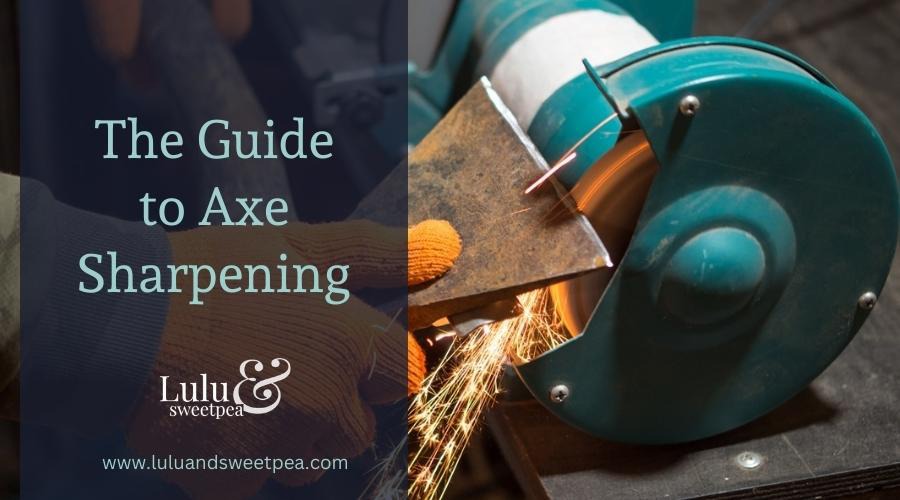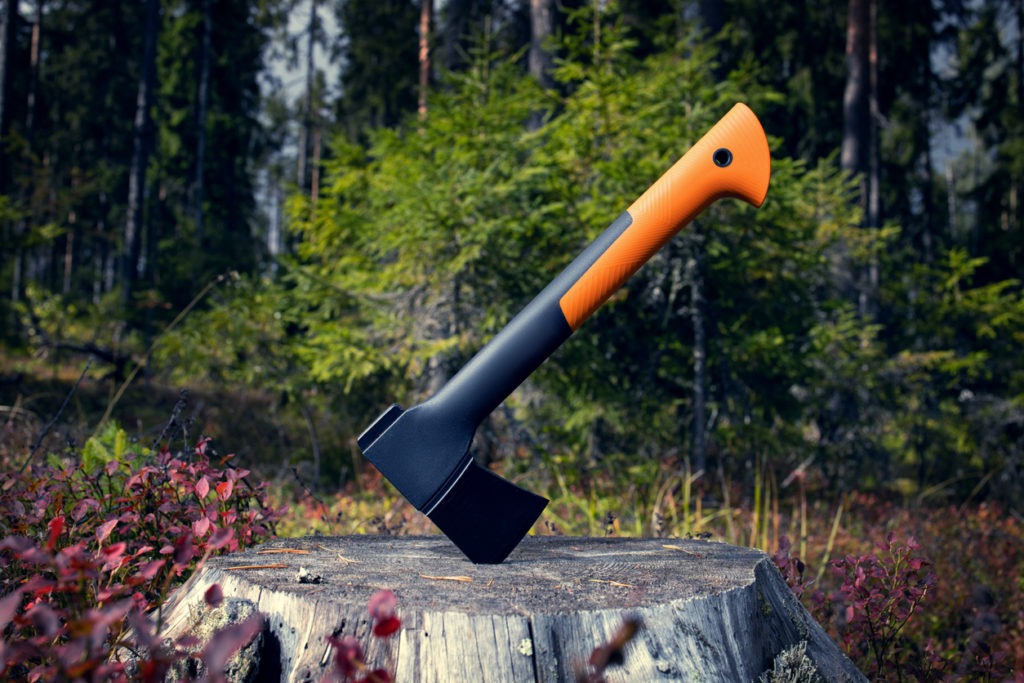An axe is an important tool while camping or backpacking, serving multiple beneficial purposes like cutting wood for bonfires, raw meat, and even as a weapon against intruders. If you still don’t have an axe, it might be a good idea to start looking for one now. Bob Robinson, a veteran gardener and part-time writer for the machine-review website Best of Machinery, made a list of the best axes on the market. Yes, axes can be fancy too. However, when the blade gets dull, its outdoor efficiency is affected; this is why axe owners should know how to sharpen their axes for that tool to remain useful outside. To help you get your axe in perfect shape at any given time, here is a guide to axe sharpening:
Before Sharpening Your Axe
Before sharpening your axe, keep these pointers in mind: first, wear gloves to protect your hands and the axe’s blade. Second, protect your eyes with goggles or glasses because the blade will chip away as you sharpen it, and tiny metal pieces could fly into your eyes. Thirdly, if you’re using a power tool to sharpen the axe, you can also wear earplugs to reduce noise and prevent damage to your eardrums.
Cleaning the Axe
To get your axe blade properly sharpened, you first need to clean its surface and remove any grime, dirt, dust, or rust that might be lodged in its grooves. Once you’ve cleaned off the gunk with steel wool, scrub away any dirt or rust on the blade’s surface. But don’t scrub too hard—too much elbow grease can lead to an uneven surface for your blade, making it duller and duller over time.
Methods of Sharpening the Axe
You can apply different methods to sharpen your axe. The efficiency of using these methods depends on how well you know how to use the items or tools needed for sharpening. Here are some of the easiest and most popular methods.
Using a File
The axe’s edge is arguably the most important part of the tool, as it allows the axe to have a cleaner cut against various objects. If the edge is dull, you might need to file it down to a thinner width to make it sharper. The best files to use for sharpening the blade edge of your axe are bastard mill files that have 8 to 12 inches in size. Much like steel wool and sandpaper, you can move a file left and right on the blade edge, although you would still need to follow along the curve while filing.
When filing the edge of an axe, it is important to remember that the edge will have a slight overhang at the end called a “burr” (which appears as a tiny upward hook). You can create the burr by filing near the end downwards first, then upwards once you get to the end. However, it would be best if you were careful not to file the edge too much, as it will become smaller. If this happens, the burr will get bigger after constant filing.
To know if your axe blade is sharp enough, test it by running the blade against your thumb. If you feel a slight burr on one side, then it means that the other side should be sharpened as well. To have a properly sharpened edge, the burr on the axe should be as small or non-existent. This can be achieved when the sharpness on both sides of the edge is equal.
Using a Whetstone
Using a whetstone is similar to a file, although the whetstone requires more precision in filing the axe’s blade. There are two types of whetstones—one for dulling the edge and another for sharpening it. The first kind usually has grits ranging from 1000 to 3000, and the second kind usually has 4000 to 8000. The product you should buy is one with dual grits or even a product that has multiple grits at 400, 1000, 3000, and 8000.
Since you will be using a whetstone, applying water to the axe’s blade is important before sharpening. The best way to sharpen an axe with a whetstone is by soaking the head in water for 10 minutes, then placing the 1000-3000 grit stone on the blade. Move the stone in circular motions up and down each side of the blade, applying equal pressure. Once you feel both sides are polished or sharp enough, move to the finer grit stone and continue filing on one end of the blade.
After sharpening the axe, it’s important to apply beeswax or oil on the blade so that moisture produced by the whetstone and water will remain on it.
Using a Dremel Tool
The most efficient but hardest method to sharpen an axe is using power tools you can purchase at a hardware store. The easiest tool for axe sharpening is the Dremel Tool, a lawn and garden rotary tool kit. However, it would be best if you had an appropriate head that should be installed on the tool. This tool’s head is specifically made to sharpen blades in gardening tools and remove rust in metal parts.
Using a Dremel tool with an Aluminum Oxide head is a faster way of sharpening the blade of an axe by grinding off small amounts of metal than using a whetstone. However, it may be harder to control how sharp you want your blade to be. Additionally, as I have previously stated, you must wear protective gear such as gloves and goggles before using the Dremel tool. So that the chunks or bits that fly off the blade won’t hurt your hands or eyes.
Filing an axe’s blade with a Dremel tool is similar to how you file the blade by utilizing a whetstone; you apply pressure in a circular motion to sharpen it. However, the circular motion should be faster so you won’t dull one part of the blade too much.
Using a Rock
Suppose you’re camping or backpacking, and you didn’t bring any sharpening tools with you. In that case, you can still sharpen your axe by using rocks that you can usually find on the ground outdoors. A rock will not do as good a job as a file or whetstone, but it will still sharpen your axe. First, use a coarse stone like granite to remove any major burrs and smooth out the blade. Then use a smoother stone like quartzite to make the edge razor sharp.
Sharpening an axe with a whetstone is the same process as sharpening it with rocks. However, you still must apply circular motions on the blade’s surface while moving the rocks. Use a coarser stone first to produce better effects before using a smoother stone. However, if there aren’t any smooth rocks in your vicinity, you can use the more common coarser stone.
These are five ways to sharpen your axe, but it’s up to you to create a better edge. You can practice on axes that you don’t use anymore, and then you can move on to using the skills on the axe that you take outdoors or use in the garden.
Benefits of Sharpening Your Axe
It’s no secret that an axe needs to be sharpened regularly to perform at its best. But, what you might not know is that there are many benefits to sharpening your axe.
- It will help you cut down more trees in less time.
- You’ll be able to chop faster, which means you’ll get more stuff done and have more time for fun activities like watching TV or napping.
- You’ll be able to chop more efficiently, which means you’ll use less energy (and therefore save money) while still getting the same amount of work done.
- It’ll make your axe last longer! The sharper your blade, the less likely it is to break or chip away during use, so you won’t have to replace it as often and can spend that extra money on something else instead!
Conclusion
Sharpening your axe is a crucial part of its maintenance. It’s also a skill that you can get better at with practice. s
If you’re new to sharpening, try using a guide like the one we’ve outlined here. They’ll ensure your blade is sharpened consistently and safely, so you can focus on getting the job done without worrying about hurting yourself or your tool.

